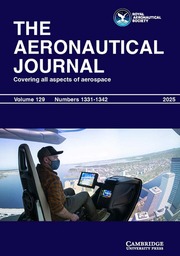Article contents
The automatic interpretation of vibrationdata from gas turbines
Published online by Cambridge University Press: 04 July 2016
Abstract
A knowledge-based computer system has been developed toautomatically scan and interpret graphical displaysof vibration data taken from strain gauges mountedon the blades of gas turbines performingacceleration tests. The various characteristic lineswhich appear on these displays are recognised andclassified and the lines representing modes ofvibration are examined to determine which mode isbeing excited and the severity of the excitation.All lines are compared, by a “blackboard” technique,against those predicted by the system working fromthe engine specification, laboratory tests andfinite element analyses. Any unexpected features arereported for manual inspection.
Several series of tests have now been made on thesystem. In the first test on 130 diagrams, every oneof over 3000 features visible to the human eye wasdetected and then classified.
Information
- Type
- Research Article
- Information
- Copyright
- Copyright © Royal Aeronautical Society 1996
References
- 1
- Cited by

